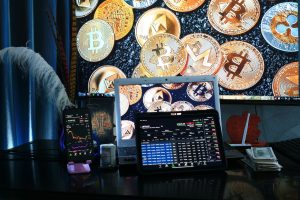Technologies for a safer smart car experience
![]() The National Highway Traffic Safety Administration states that anything that takes a driver’s eyes off the road, hands off the wheel, and mind off driving safely can cause an accident, and that any non-driving activities, like using your phone or GPS hands-free, is a potential distraction.
The National Highway Traffic Safety Administration states that anything that takes a driver’s eyes off the road, hands off the wheel, and mind off driving safely can cause an accident, and that any non-driving activities, like using your phone or GPS hands-free, is a potential distraction.
The NHTSA’s advisory is backed by previous incidents in the past wherein use of a GPS impaired the judgement of the driver and caused an accident. In 2008, it was reported that GPS caused 3,000 car crashes in the UK when drivers blindly followed the instructions given to them such as driving on train tracks, driving on the wrong side of the road, and driving through an intersection without checking to see if the road is clear.
Some blame such incidents on outdated maps, but sometimes, it’s probably more of the driver’s fault for not using his head before following directions, such as the case in 2012 when a car boarded by three Japanese tourists ended up submerged in water. The tourists were trying to get to another island in Australia and ended up driving through water because that’s what the GPS told them to do.
So what does these mean for the connected car market? This means that car manufacturers, and those in the connected car business, not only have to worry about what the competition is working on, but make sure the technology they are working on won’t cause accidents that could claim lives.
This week’s SmartCar roundup features a set of technologies that could potentially help solve safety issues with regards to connected cars.
Augmented reality windshield
![]() When driving, you need to keep your eyes on the road and your mind alert for any sudden changes in road conditions, or to watch out for pedestrians crossing where they shouldn’t be crossing. Because of this, many are looking into developing a head-up-display unit that delivers needed information right in front of a driver’s eye without obscuring the line of vision. The problem with this is the focus of the eye will shift to the small screen of the device and the driver may not clearly see what’s on the road.
When driving, you need to keep your eyes on the road and your mind alert for any sudden changes in road conditions, or to watch out for pedestrians crossing where they shouldn’t be crossing. Because of this, many are looking into developing a head-up-display unit that delivers needed information right in front of a driver’s eye without obscuring the line of vision. The problem with this is the focus of the eye will shift to the small screen of the device and the driver may not clearly see what’s on the road.
General Motors developed an augmented reality windshield which will allow drivers to see information displayed right on their windshield without blocking your view of the road or shifting your focus away from the road. The windshield uses a type of glass coated with red-emitting and blue-emitting phosphors that glows when it is excited by ultraviolet light.
GM is expected to roll out vehicles with augmented reality windshield by 2018.
Multitouch skin technology
![]() Some car manufacturers have placed some of the controls for their infotainment system on the car’s steering wheel. This makes it easier for drivers to change radio stations without having to reach for the radio of take their eyes off the road.
Some car manufacturers have placed some of the controls for their infotainment system on the car’s steering wheel. This makes it easier for drivers to change radio stations without having to reach for the radio of take their eyes off the road.
Apple was granted a patent for Multi-Touch Skin technology, which would bring the multi-touch technology to 3D devices such as a steering wheel. What this means is, a simple swiping gesture on the steering wheel could increase or lower the volume of the radio, tapping to change stations, pressing it would engage voice controls of the GPS, or other simple tasks that are easy to remember and perform. Of course, a multitouch steering wheel could be problematic, so it would really help if there was a power button so you won’t be flipping stations every time you thump on it.
Gesture tracking
SoftKinetic, a company that specializes in 3D CMOS time-of-flight sensors, modules and cameras that are used in some PS4 games, is looking to apply its technology to improve connected cars with gesture controls. Cars can be equipped with 3D cameras, which can identify gesture controls or hand movements in the air. With gesture control, drivers can keep their eyes on the road and one hand on the wheel, minimizing the risk for accidents.
image source: SoftKinetic
I imagine the 3D camera to be used in cars would be something like the new Kinect on the Xbox One, always on so you just have to perform a certain hand gesture to let it know you are interacting with it, then a beeping sound will let you know if it’s okay to give the next command. All gestures should be simple and can be performed using one hand. It should come loaded with basic gesture commands but should also be customizable.
Though this system might be something drivers would be comfortable in using, it would probably take years before SoftKinect launches such a product since there are many factors to consider like how to keep the focus on the driver’s gesture when there are others on board the vehicle.
photo credit: kudumomo via photopin cc
photo credit: PhotoDu.de / CreativeDomainPhotography.com via photopin cc
A message from John Furrier, co-founder of SiliconANGLE:
Your vote of support is important to us and it helps us keep the content FREE.
One click below supports our mission to provide free, deep, and relevant content.
Join our community on YouTube
Join the community that includes more than 15,000 #CubeAlumni experts, including Amazon.com CEO Andy Jassy, Dell Technologies founder and CEO Michael Dell, Intel CEO Pat Gelsinger, and many more luminaries and experts.
THANK YOU













